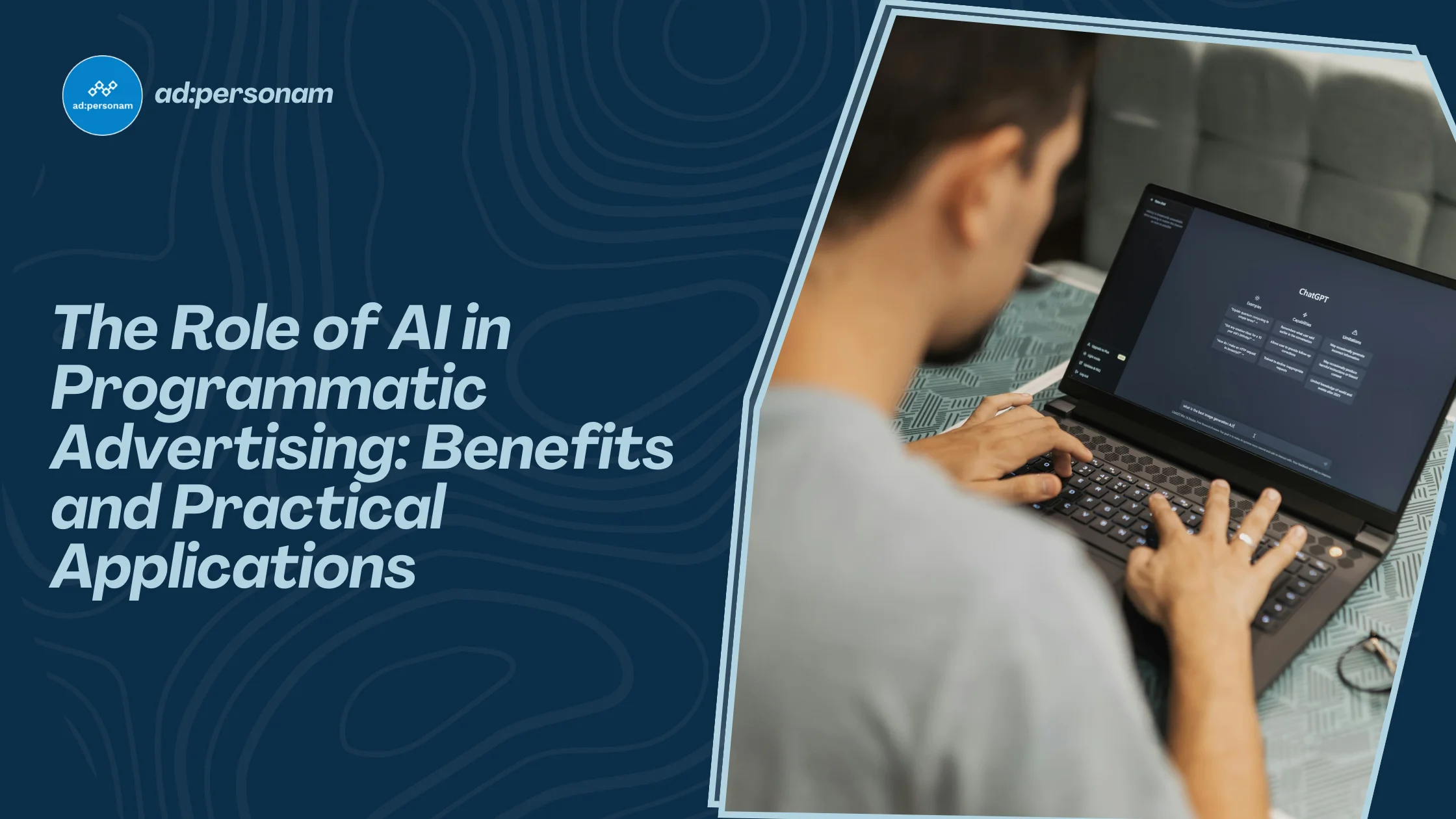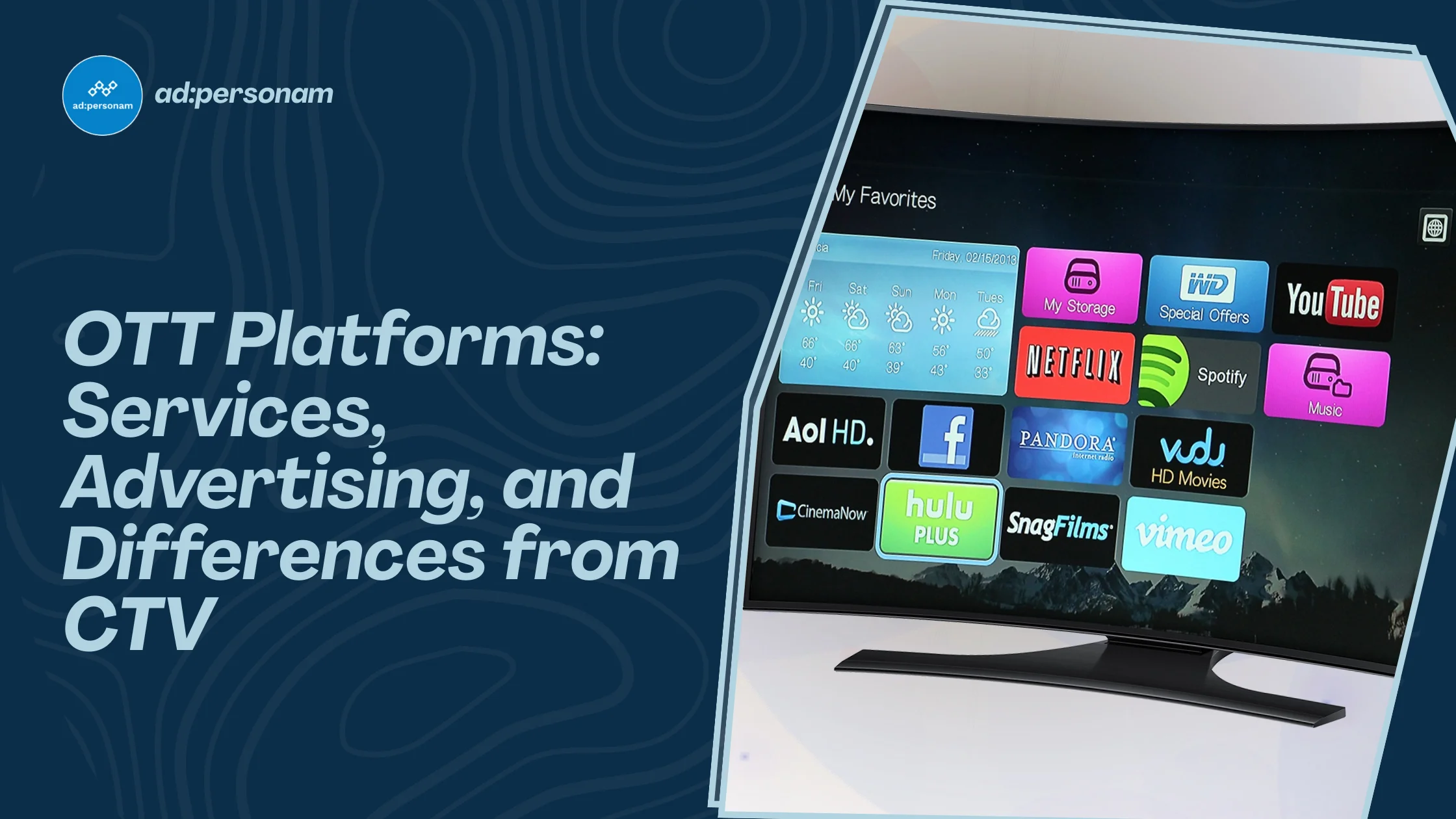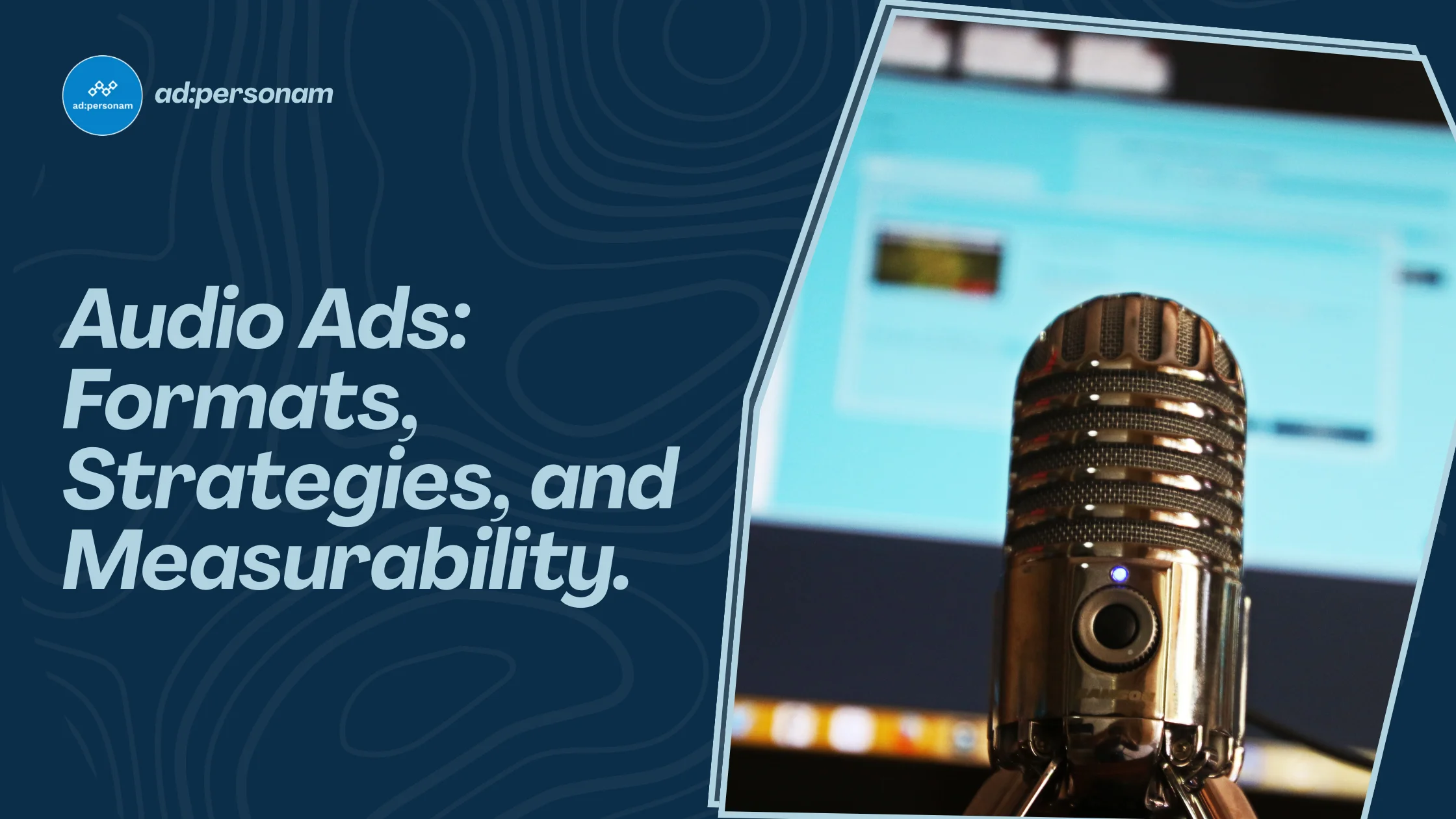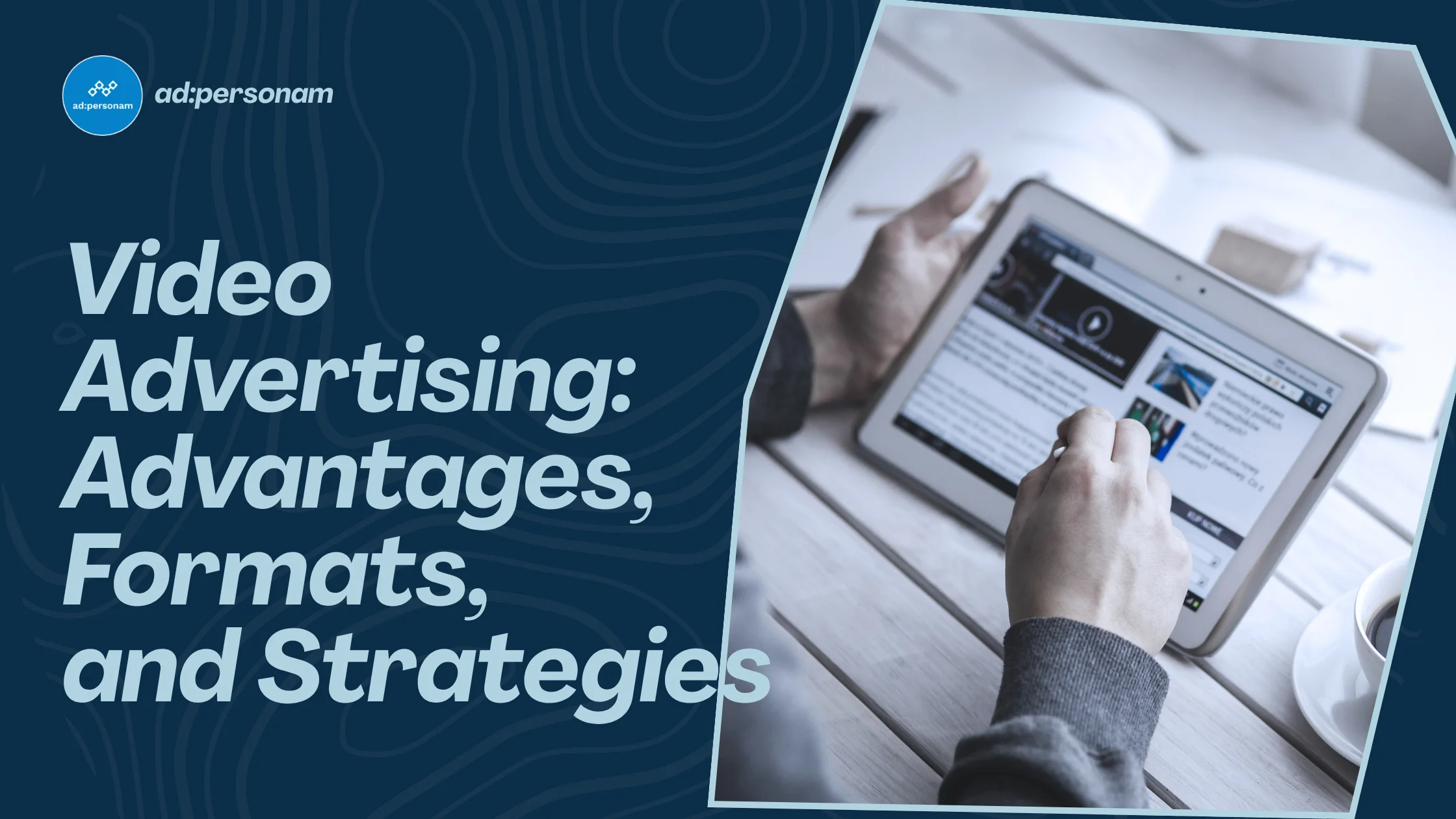The Role of AI in Programmatic Advertising
Discover five key ways AI reshapes programmatic advertising—from creatives to optimization—and why it’s essential for modern marketers.

Artificial Intelligence (AI) continues to reshape digital advertising, ushering in a new era of programmatic advertising AI that fundamentally alters how campaigns are conceived, executed, and analyzed. From generating on-brand creatives at scale to intelligently sifting through hundreds of targeting options for precise media planning, AI’s influence now touches every stage of a campaign’s lifecycle.
Below, we explore five core areas where AI is making a substantial impact and discuss the underlying innovations that drive these advancements.
1. Creative Ads
One of the most significant hurdles in advertising is maintaining creativity and relevance across multiple formats and audience segments. Generative AI addresses this by rapidly producing on-brand ad variants without sacrificing personalization.
In ai in programmatic advertising, this technology streamlines the creative process. Instead of manually crafting multiple ad formats—like display banners, video, and social media posts—AI-powered generators learn from existing brand guidelines and audience preferences. Marketers can then deliver highly tailored ads to different segments, all orchestrated through automated workflows in demand-side platforms (DSPs).
This approach eliminates repetitive design tasks and frees up creative teams to focus on strategic thinking. By automatically testing variations (e.g., headlines, visuals, color schemes) across different channels, AI solutions can quickly identify which elements resonate most effectively with specific audiences, boosting engagement rates and reducing ad fatigue.
2. Media Planning
Traditional media planning in a programmatic context often involves parsing through extensive research, campaign objectives, and demographic data. AI is radically simplifying this process by transforming client RFPs (Requests for Proposals) into actionable media plans with minimal manual intervention.
Imagine a brand requesting a campaign to reach frequent travelers in Germany who enjoy outdoor experiences. AI-driven media planning tools, like our AI Media Planner, can automatically sift through extensive targeting options—demo, geo, interest segments, even custom audiences—to recommend precise targeting parameters. By referencing contextual signals and historical performance data, these tools help you allocate budgets, channels, and creatives more effectively.
This deep integration extends to every step of the campaign planning process. Our recent post on AI Tools for Programmatic Advertising delves into how advanced algorithms analyze audience segments to match your campaign goals. The end result is a more efficient path from a client’s initial RFP to an actionable plan, saving time, reducing guesswork, and ultimately maximizing ROI.
3. Reporting
As campaigns generate massive datasets—impressions, clicks, conversions, and beyond—extracting actionable insights can be daunting. Modern AI solutions transform these raw numbers into compelling narratives, replacing tedious PowerPoint decks with interactive, data-driven reports.
In a programmatic setting, automated dashboards and AI assistants interpret real-time performance data to highlight key metrics, trends, and anomalies. Rather than sifting through multiple platforms and spreadsheets, marketers can quickly see which channels, creatives, or audience segments are driving the best results. Better yet, these insights can be updated on the fly, enabling faster pivoting when performance dips or spikes.
This is where Insights CoPilot comes into play, an AI-powered service from ad:personam’s Self-Serve DSP that leverages the latest generative models from OpenAI. By analyzing your campaigns at scale, Insights CoPilot automatically produces comprehensive, easy-to-understand reports tailored to your specific objectives. Whether you need a broad overview or a granular breakdown of performance, the tool delivers nuanced insights you can share with stakeholders—without spending hours building slides.
4. AI Agents
Another exciting frontier is AI-assisted campaign setup, where a simple text prompt could replace the manual steps of configuring budgets, audiences, and creatives in a DSP. As most DSPs provide API access, AI agents can interpret natural language instructions—such as “Launch a two-week CTV campaign targeting tech-savvy homeowners in the U.S. with a $50k budget”—and execute campaign setups in seconds.
This approach not only saves time but also reduces the risk of human error. AI agents can tap into past campaign data to refine their configurations, ensuring that every new campaign starts with an optimal setup. While marketers retain control over final approvals and creative direction, AI agents tackle the labor-intensive tasks, allowing professionals to focus on strategic objectives, storytelling, and client relationships.
5. Optimization
AI-driven optimization in programmatic advertising goes beyond simple bid adjustments. By leveraging advanced machine learning models, demand-side platforms can factor in numerous real-time signals—ranging from user behavior and device type to contextual elements like time of day or local weather—and calibrate bids accordingly. For instance, if data reveals that desktop traffic leads to higher conversions on weekday mornings, the algorithm might automatically increase bids for desktop users during those hours, while allocating fewer resources to underperforming segments.
Another major advantage of AI in optimization is its ability to mitigate ad fraud. By analyzing large volumes of traffic data in real time, AI-powered solutions detect unusual patterns—such as automated click bots or other forms of fraudulent activity—and exclude non-genuine or low-quality impressions. This proactive approach maintains stricter oversight of ad exchanges, ensuring campaigns run on credible inventory and preserving budget for genuine user interactions. As the system collects performance data, it continually refines its bidding strategy, forming a feedback loop that helps pinpoint high-value impressions before they’re served. Ultimately, this dynamic optimization process boosts conversion rates, enhances overall efficiency, and drives higher return on ad spend (ROAS).
Conclusion
Artificial intelligence is redefining every facet of programmatic advertising. Generative models expedite creative production, AI-powered planning tools streamline RFPs into actionable plans, and automated reporting solutions turn complex data into digestible insights. Meanwhile, AI agents promise to make setting up a campaign as effortless as typing a single prompt, while sophisticated bidding algorithms adapt to real-time signals for optimal budget allocation.
To see these advancements in action, explore our AI Media Planner and discover how it can help you instantly convert client requirements into a highly targeted media plan. And when it comes to digging deeper into performance metrics, rely on Insights CoPilot from ad:personam’s Self-Serve DSP to transform large datasets into impactful, visually engaging reports. Embracing AI isn’t just about staying current; it’s about unlocking a more efficient, creative, and data-informed future for your advertising endeavors.
You might also like

OTT Platforms: Complete Guide to Advertising, CTV, and Streaming Services
Comprehensive guide to OTT platforms: how streaming services work, differences with CTV, and why they matter in programmatic advertising.

Audio Advertising: Complete Guide to Programmatic Audio & Podcast Ads
Discover what audio ads are, explore high-definition audio ad formats, and learn how to create effective digital audio campaigns with programmatic DSP and AI-driven optimization.

Video Advertising: Complete Guide to Formats, Strategies, and CTV Campaigns
Master video advertising: formats, strategies, and CTV campaigns. Learn to optimize your video ads with AI-driven DSP platforms for maximum ROI.